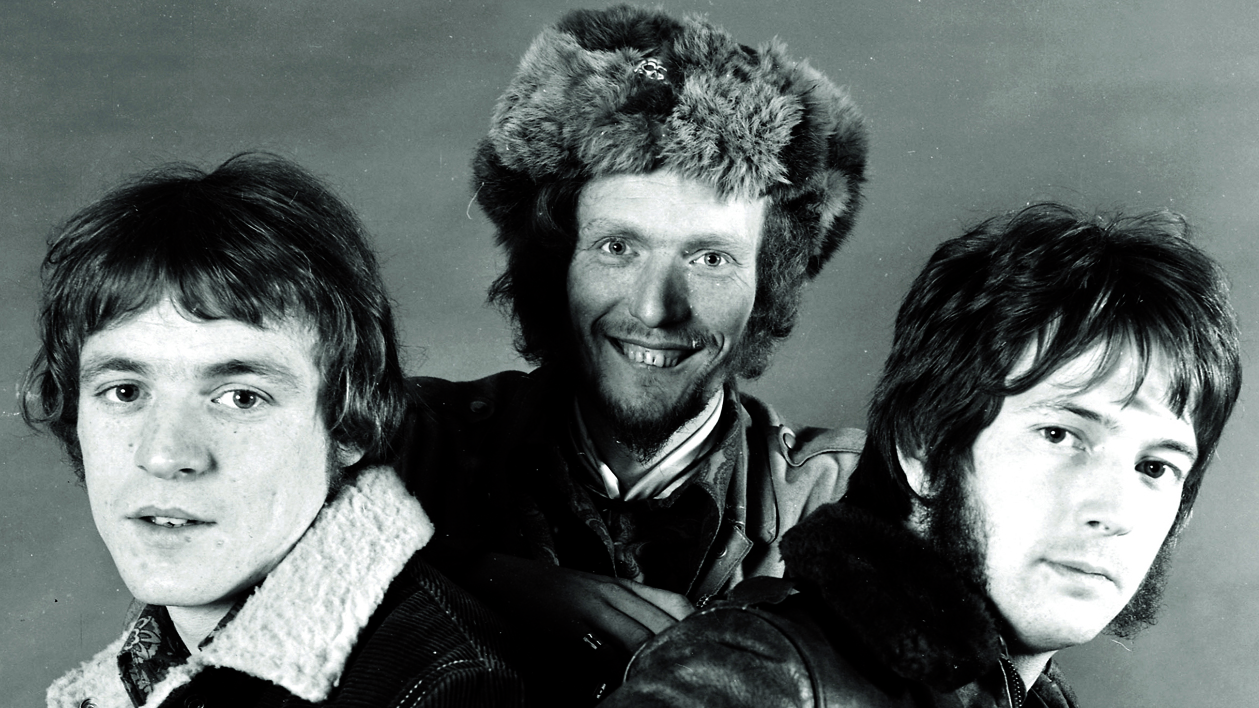Some years slip past with a whimper. Others shake the world. Politically and socially, 1966 was no picnic. In March, US President Lyndon B Johnson declared his intent to escalate the bloody conflict in Vietnam, stepping up stationed troops to a quarter-million.
That same month, in the UK, the Kray brothers’ reign of London plumbed new depths with the murder of George Cornell. In May, Myra Hindley and Ian Brady received life terms for killing five children. By summer, protests by teenagers on the Sunset Strip were brutally put down by LA police. To paraphrase that year’s apocalyptic Rolling Stones single, this was a world painted black.
And yet, culturally speaking, there’s no other date you’d rather set the DeLorean’s dashboard console for. To be young and living in London or New York in ’66 was a miracle of time and place, a cultural lottery win that threw you into a kaleidoscope of drugs, sex and infinite possibility. As writer Jon Savage puts it in his book 1966: The Year The Decade Exploded: “Young people were creating an exciting, progressive mass culture in plain sight. They dared to dream. For a while, they got away with it…” The greatest minds and bodies were at the peak of their powers, whether that was Truman Capote penning In Cold Blood, Clint Eastwood grizzling through The Good, The Bad And The Ugly or the England football team beating the West Germans 4-2 at Wembley.
Above all, of course, there was the music, with a changing of the guard epitomised by Jimi Hendrix stepping off the plane at Heathrow on September 24, and by the astonishing run of stone-cold-classic blues albums that spread ripples to this day. 1966 was a year like no other. And this was the soundtrack…
Clapton’s Next Move
Eric Clapton, Jack Bruce and Ginger Baker talk to the NME as Cream get together to take on the world.
“I’m a blues guitarist,” obliged Clapton. “And Jack is a jazz man and Ginger is rooted in rock’n’roll. I say that of him because he is at the bar and cannot hear it!” Jack Bruce, who wrote the music for their hit with a friend, Pete Brown, who is a recognised beat poet, hotly disputed this label of a jazz musician. Ginger Baker was unanimously appointed “group leader” in his absence due to the fact he was buying – and returned to give his views on the Cream.“We do a few Howlin’ Wolf numbers on stage and some of our own material. We’re old bottles in new wine!”
In the few sane moments I discovered that the group have already completed the first LP, which is a compilation of their stage numbers like Rolling And Tumbling and Dreaming. An EP has also been cut which includes Spoonful, another Howlin’ Wolf number.
The group has a predominantly male following – although Messrs Baker, Clapton and Bruce are working on that one – and this is largely due to their reputation as musicians. This, of course, has nothing to do with any visual appeal they may have. After one particularly riotous performance they were rumoured to have a similar stage approach to The Who.
“That’s not true,” said Clapton. “What happened was that at one performance we did at Leeds University I placed a huge firework on the stage and informed the audience that it was a bomb which would blow up the drummer and band if lit. And if anyone wanted to light it they could – someone did. But it just happened that way – it was no act.
“Sometimes I feel a little sorry for The Who – whom we admire incidentally,” he continues. “They are now expected to do this ‘destructive’ bit at every performance.”
He also declared he had a unique plan for when their scene cooled.
“I’m going to bring in the Harry South Big Band to augment the group and have Carmen Dragon directing it.”
Baker also saw into the future for the Cream.“I said all along that if England won the World Cup we’d be all right, and they did and we will be.”
On that strangely prophetic note they climbed into a white saloon car and sped off. I must remember to ask Ginger Baker where he got that Davy Crockett hat with the brass skull badge, except that I’m frightened to death he’ll tell me he was at the Alamo!
© Keith Altham, New Musical Express, October 28, 1966.
Cream
Fresh Cream (Reaction)
What kind of a fool walks out on the Bluesbreakers at the very peak of their powers? For one awful moment in October 1966, as Cream announced their arrival with the distinctly underwhelming Wrapping Paper, Eric Clapton looked like a man who had just committed career hara-kiri, quitting Britain’s most vital blues outfit to drop a honking novelty single that he would later dismiss as “something [people] really didn’t like or want or expect”.
Wrapping Paper might have been a nose-tweaking false start from the band, but thank God, when the trio’s debut album arrived that December, vindication was writ large. Fresh Cream was exactly what it said on the tub: a zinging new sound, poured down your throat by the three finest players on the London scene.
“This album is made up of pure fresh cream,” ran the sleeve notes. “Digest and enjoy it, but do not worry too much, there is a lot more where this has come from…”
Some would say that Cream only improved after the release of their debut; the following year’s much-loved Disraeli Gears certainly tends to chart substantially higher in most contemporary best-album polls. Yet there’s still much to recommend this first slug of greatness. The deathless thrill when the ‘bo-bo-bos’ of I Feel Free are punctured by Ginger Baker’s Ludwig thump and Clapton’s fuzz riff. The harmonised whooped chorus of N.S.U. The bap-bap-bap opening gambit of Sweet Wine.
The album’s flipside might have featured less original songwriting, but the clatterous assault on Muddy Waters’ Rollin’ And Tumblin’ and the sleazy crawl through Willie Dixon’s Spoonful marked the line-up as master interpreters, while it’s testament to the brilliance of their take on Skip James’ I’m So Glad that the song was chosen to open their Albert Hall reunion shows of 2005. By the time Baker had battered his way through Toad, the consensus was that Fresh Cream was the perfect finale to 1966 – and a signpost to where blues rock would go next.
Henry Yates
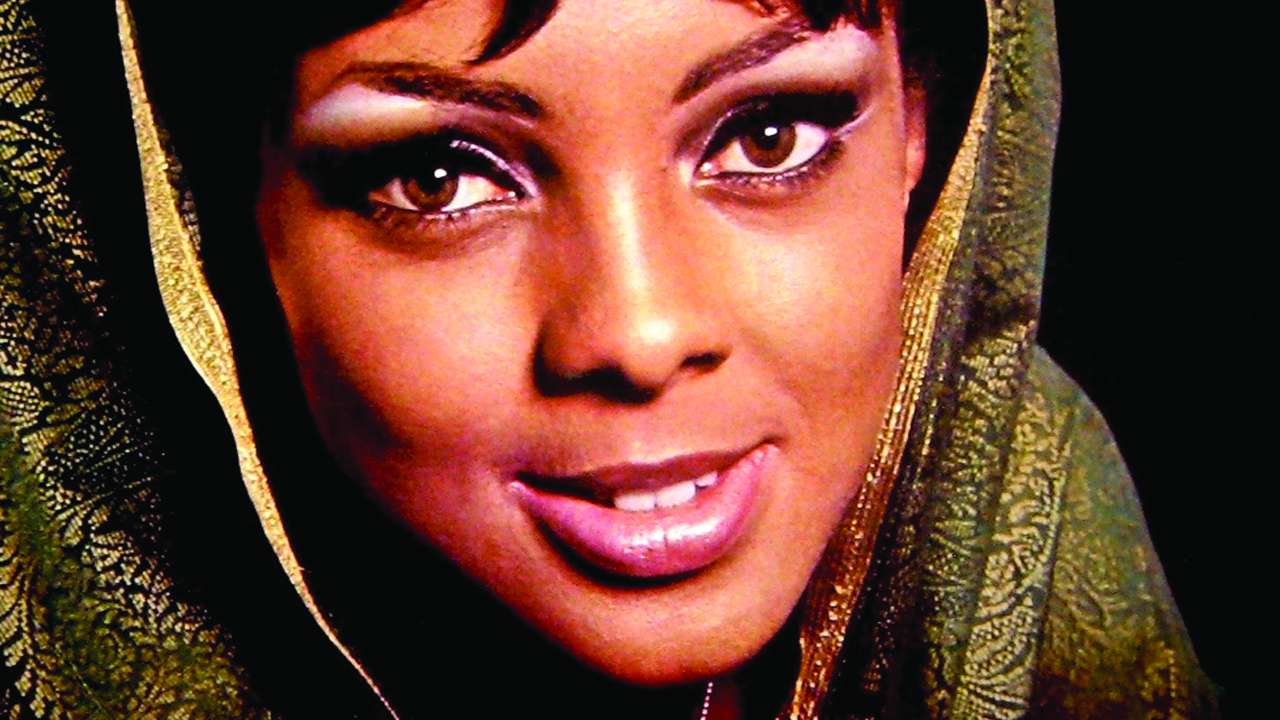
Otis Redding
The Soul Album (Volt)
The year 1966 was a very good one for Otis Redding. While 1965 had seen the issue of Otis Blue, now widely acknowledged as Redding’s landmark album, it was its follow-up The Soul Album that notched up the big sales at the time, peaking at No.3 in the US R&B chart and becoming his biggest album to that date. Its sole single, Just One More Day, a blistering ballad, co-penned by Otis with Steve Cropper and McEvoy Robinson, also introduced the soul star to the UK singles chart, when it rewarded him with his first 45 to make the Top 30; it also made No.15 in the US.
Recorded between November 1965 and August 1966 at Memphis’ famous Stax studio, with the Stax engine room – Booker T And The MGs, the Memphis Horns and Isaac Hayes – it captures Otis over 11 songs, heavily weighted to cover versions, many contemporary, revealing just how strong an interpreter he was.
In his hands, the Smokey Robinson and Pete Moore-penned It’s Growing, which had been a hit for The Temptations in 1965, is dramatic and gutsy; his gorgeous take on Chain Gang is more soulful and yearning than Sam Cooke’s original version; Roy Head’s peppy Treat Her Right becomes a seductive southern swing. On re-imaginings of Bessie Smith’s Nobody Knows You When You’re Down And Out and Slim Harpo’s Scratch My Back, meanwhile, Redding is cast as the earthy bluesman; world weary and wise on the first named track, lascivious and strutting on the second.
The original tracks on the record are equally strong, both in terms of songwriting and performance. The wonderful Good To Me, co-authored by Redding alongside Julius Green, is a quintessential deep soul ballad, featuring one of Redding’s most passionate deliveries. Any Ole Way scribed with Steve Cropper is a great dancer, guaranteed to liven up any flagging party the minute it hits the decks; and Cigarettes And Coffee, written with Jerry Butler, is emotion-drenched and absolute perfection.
Alice Clark
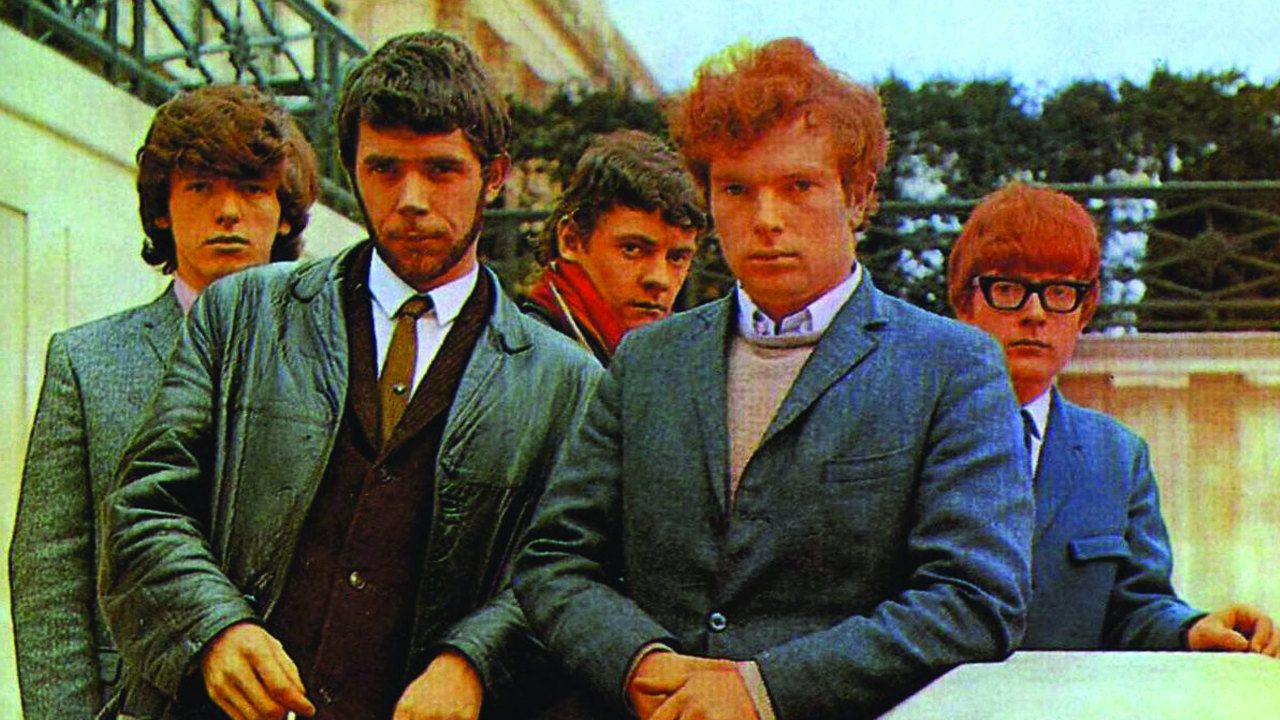
Them
Them Again (Decca)
Important. It’s a word much loved by music journalists, typically used to describe albums that had huge influence, yet sank like stones commercially. So it’s safe to say that Them Again is an important album. Released on the Decca label in January 1966, it didn’t even dent the British chart; a subsequent crack at the States in April managed a risible, almost laughable No.138 on the Billboard chart. To be fair to the record, though, Van Morrison wasn’t much of a salesman. “It was kinda like a mish-mash,” he told Rolling Stone in 1970, “and it wasn’t really any good. But they released it as Them Again, because obviously the record company wanted to do its thing.”
With the greatest respect to the band’s frontman, history has proved him very wrong indeed on this one. While Them Again does admittedly bear the hallmarks of an album that has been cobbled together – Morrison once recalled a revolving cast of endless different “studio cats” – there are plenty of lovely moments that endure 50 years down the line. Revisit the lugubrious, late-night cover of Screamin’ Jay Hawkins’ classic I Put A Spell On You, for instance, or the Rolling Stones-worthy country strum of My Lonely Sad Eyes. Consider the truly stunning take on Bob Dylan’s It’s All Over Now, Baby Blue (a song subsequently covered by Van Morrison live throughout the course of his solo career after the band came to an end).
Yet the album’s fulcrum and standout track is undoubtedly Phil Coulter and Tommy Scott’s number, I Can Only Give You Everything. In Them’s precocious young hands, the song became a fuzz-faced R&B stomper on a par with the more celebrated Gloria. Released as a single in 1966, its afterglow was astonishing, covered by too many snot-rag US garage bands to list here (but never more thrillingly than by a nascent MC5 in March 1967). That jabbing riff was even half-inched by Californian alt-rocker Beck three decades later, for his 1996 Devils Haircut single.
An important album for sure, then. But also a damn good one that’s well worth revisiting on a regular basis.
Henry Yates
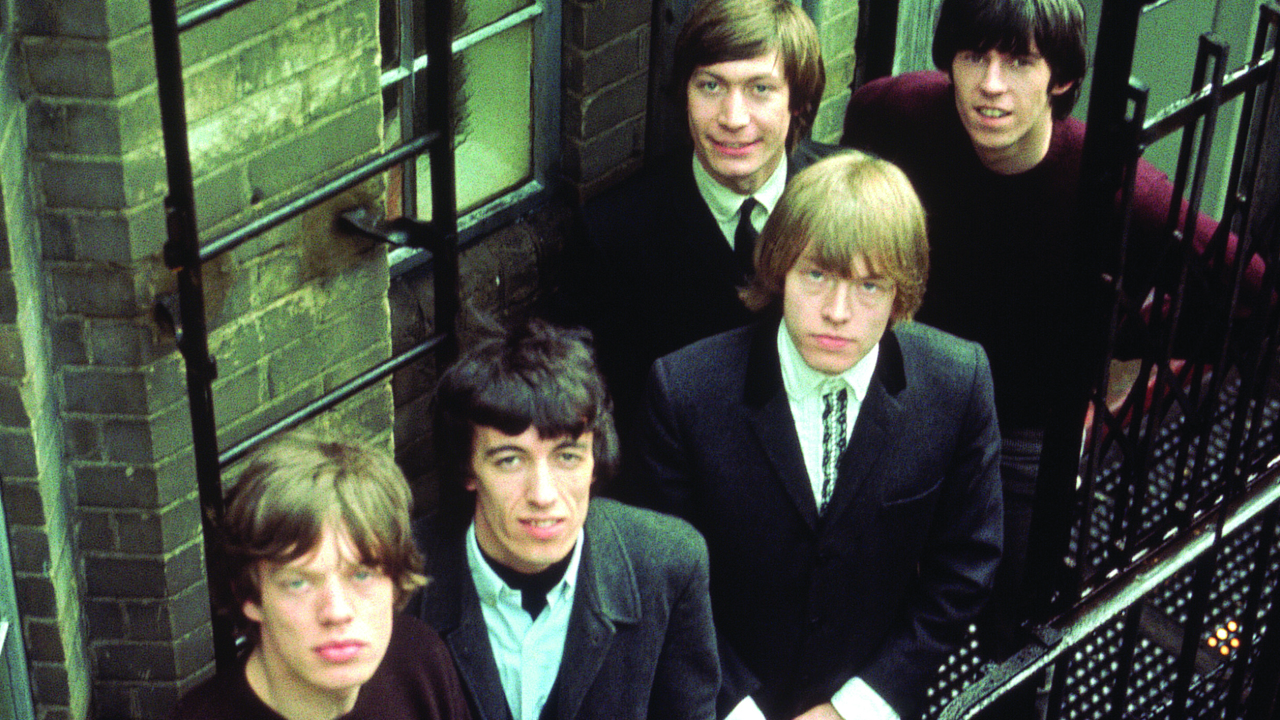
The Rolling Stones
Aftermath (Decca)
Aftermath catches The Rolling Stones in transit: somewhere in between pissing on garage walls and the mass dope busts, after their first long spell on the road as teenybop big bad wolves but before their grand re-entry as elder statesmen of raunch, cruising through the baroque studio zone that separates the hot little R&B combo cum ace singles band from the towering edifice of The Greatest Rock And Roll Band In The World.
A very ‘studio’ studio album with a sound that in some ways seemed lightweight in comparison to the earthquake of tormented Marshalls laid down by Cream later that same year, and in others extended feelers and tendrils into uncharted areas.
Jagger’s most brutal chauvinism, Brian Jones on dulcimer, marimba, sitar and a mouth-harp style that had somehow ended up a million miles away from the Little Walter and Sonny Boy Williamson pastiches with which he’d started out, poisoned pop bonbons and 11:35 of Goin’ Home, Brian Jones’ beautiful waxy mask, the arrogant knowing stares of Bill Wyman and Keith Richards – one poker-faced, the other vaguely psychotic, black leather and white corduroy, mod mutating into hippie, gimme danger little stranger and you can feel my disease.
An odd mixture, therefore, of courtliness and violence: the rapist with a rose: “No, after you, madam,” murmurs Jack the Ripper with a bow.
The exaggerated medieval chivalrousness of Lady Jane rubs shoulders with Stupid Girl and Under My Thumb, and there’s still Out Of Time to come yet.
While there was still a crying-out need for rock songs that cast aside the tawdry vocabulary of Woman’s Own romance that held sway as means of sexual rhetoric, the vicious and dehumanised attitude touted by Jagger in these songs might have provided comfort for spotty failures who needed to get their consolation kicks out of hearing those arrogant creatures who rejected them getting soundly put down, but it sure as hell sounds nasty coming from a guy who was getting more pussy than the local cats’ home. Women: there’s a certain kind of guy who hates ’em even more when they’re coming across than when they ain’t.
Open it up with a dope song: Mother’s Little Helper points the finger at the bored, resentful housewife who gets through life on overs, unders, sidewayers and downs because her existence is so crummy; the song is not without compassion, though it eschews the mawkishness that, say, Paul McCartney would have fallen into if he’d tackled the same theme.
It seems incongruous that ravers like Mick ’n’ Keef would be able to empathise with the problems of a middle-aged woman caught in the housewife trap.There is more to these guys than meets the eye. This has been a public service announcement.
Aftermath features an odd mixture of courtliness and violence.
No bleeding-heart sympathy on Stupid Girl though, Jack! It’s the whole awwwwwwwww dumb chicks, man-trip writ large. Could well be that Jagger was trying to shape a young white British equivalent to the swaggering macho stance of bluesman like Muddy Waters; trouble was that he missed out on the wit and observation of Muddy’s songs and those that Willie Dixon wrote for him, and ended up with little more than frenzied abuse, nowhere more so than in Under My Thumb; pure slave-owner mentality.
Musically, Aftermath is notable for Brian Jones’ uses of his various instruments for textural purposes: the ragged sitar outbursts on Mother’s Little Helper, the clunking marimba on Out Of Time and Under My Thumb, the smirking tomcat slide guitar on Doncha Bother Me, another girls-are-soppy putdown song and a faithful recreation of 50s electric country-blues right down to Jagger’s evocation of Muddy’s falsetto, the wind-through-the-trees echoing ghost-train mouth-harp on Goin’ Home…
Ah yes. Goin’ Home.
It’s a moot point as to what was the first really long studio improvisation by a rock band. Certainly, 1966 was the year of Butterfield’s East-West, which featured 22 minutes-worth of improvisation on Work Song and the little track, there was all kinds of lengthy weirdness on Zappa’s Freak Out, not to mention Bob Dylan doing long songs as far back as The Times They Are A-Changin’, but in 1966 the Stones were a bigger deal: they were more famous and their album came out first.
Goin’ Home was a roller-coaster ride: Keith’s guitar was as eerie and shimmering as Jones’ harp and they improvised together for extra texture. Jagger remains at the mic scatting, slurping, whispering, grabbing onto a phrase and elongating it like taffy, stretching it out/cutting it up/folding it back. The track is actually very sparse: Keith leaves a lot of spaces. In fact, what he plays is almost blues riff doodles, lazy but incredibly deft and sneaky, which leaves it up to Jones to provide both ambience and counterpoint, which he does with a soft, reedy, reverberating sound that’s simultaneously close up and very distant, right behind you to tap on your shoulder and simultaneously round the block and up on the hill somewhere.
It was blues opened out; a conjuror shaking out his pocket hankie until it’s the size of a bedsheet. Blues is claustrophobic: tales of pool-hall jive and hard times in cardboard-box ghetto bedrooms, concrete angst hammered out in sweatstream one-whisky-one-beer barroom clubs. What Jones’ Goin’ Home did was put space into the blues, something that didn’t happen even with the mammoth improvisations of later Cream, despite their length: that was just heavy-duty urban claustrophobia escalated to the levels of an acid nightmare, blues not so much opened out as stretched out. Brian Jones gave the blues a sense of Central Park gothic on Goin’ Home; without him the Stones became more consolidated, more concentrated, more entrenched in their strongest areas.
When they went out on tour with Mick Taylor in ’69 they regained an essence of liveness and immediacy that had perhaps been lost amongst the dulcimers, sitars, marimbas, cellos, harpsichords, recorders and gawdknowswhat that Jones lugged into the studio when he was at the height of his powers. Where Brian Jones was headed could’ve ended up, if he’d lived, as creeping Oldfieldism, but I doubt it, since Jones was too much of a bluesman to get sucked into the swamp of pastoral romanticism and overdubbing-a-go-go for too long.
Aftermath was heavy music in content rather than form: your foot taps rather than stomps. The accent was on being clean, brisk, light and tight: it doesn’t sound as if anybody blew their speakers out while making this one.
Outside of Goin’ Home (11:35) and Out Of Time (5:15), nothing on the album breaks the three-and-a-half-minute barrier, which is why the Stones managed to squeeze in 14 tracks totalling over 50 minutes of music, a feat which wouldn’t have been possible if they’d been into the kind of thunderous bass lines that hog inches of vinyl for comparatively short playing times.
Lotta pop songs: the kind of songs that can be lifted, covered and charted.
Chris Farlowe scored a No.1 with a Jagger-produced version of Out Of Time and also had a go at Think. On side two, Wayne Gibson hit with Under My Thumb just last year (though he’d made the record in ’66, and piss-poor it was too), and only Roy Carr and Allen Klein know exactly who else made their tries.
Aftermath was originally entitled Can You Walk On The Water? and in the light of Mr Jones’ fate it’s just as well that it wasn’t. As it is, it’s less of an aftermath than an interlude: Aftermath and Between The Buttons (let’s leave Satanic Majesties right out of this, okay?) serve to act as territorial/temporal boundary lines between First Wave Classic Stones and what we might think of for purposes of reference as Modern Stones (Beggar’s Banquet and after).
Still, ’66 was like that: the end of the echoes of Merseybeat and first wave Brit R&B and a curtain-raiser/coming attractions display of what was to emerge in the last years of the 60s. And in some ways it was more exciting than the psychedelic eruption it presaged.
© Charles Shaar Murray, New Musical Express, December 25, 1976.
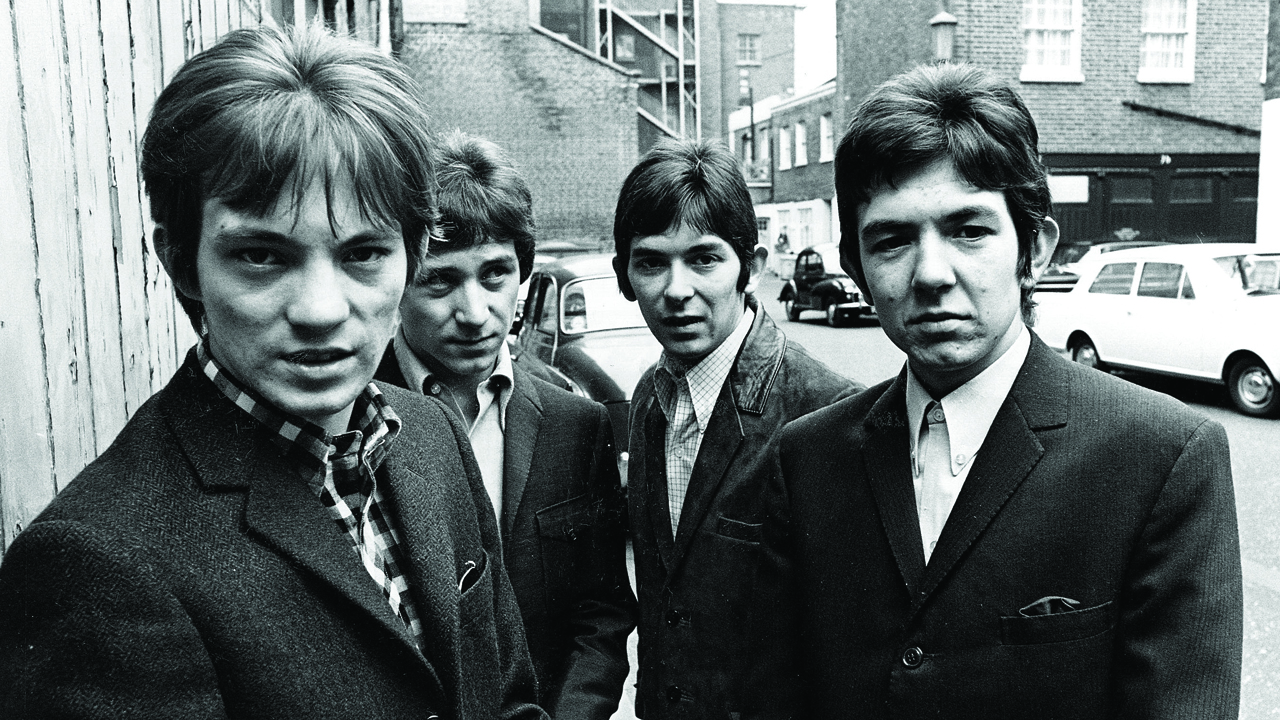
Small Faces
Small Faces (Decca)
1966 was the year in which The Small Faces proved themselves more than one hit wonders when in February their third single Sha-La-La-La-Lee reached No.3 in the UK chart. It was their first featuring ex-Muleskinner Ian McLagan with his Hammond organ, which allowed the Booker T And The MGs-loving band comprising singer/guitarist Steve Marriott, bassist/vocalist Ronnie Lane and drummer Kenny Jones to get the tough R&B sound they had been looking for. Sha-La-La-La Lee, though, was pop, written for the band by songwriters Kenny Lynch (who also sang backing) and Mort Shuman after the more adventurous Marriott-and-Lane-penned second single I’ve Got Mine failed to hit. Still, Marriott’s soulful vocal and the band’s exuberant performance gave Sha-La-La-La-Lee an edge most of the Faces’ contemporaries lacked. In May they consolidated their success with the boisterous Marriott-and-Lane-authored follow-up single Hey Girl and their self-titled R&B-based debut album. Based around their live set, the album featured their three hit singles to date. Their debut 45, Whatcha Gonna Do About It, written by Ian Samwell, took its title from the Doris Troy song of the same name and its musical backbone from soul singer Solomon Burke’s Everybody Needs Somebody To Love, but added a feedback-enhanced guitar solo in a similar style to The Who. It featured original keyboardist Jimmy Winston, who also played on another five of the 12 album tracks – despite only McLagan being credited – including You Need Loving, based on Muddy Waters’ Willie Dixon-penned You Need Love, with Marriott contributing an extraordinarily raw, powerful vocal. Small Faces fan Robert Plant would later ape Marriott’s delivery on Led Zeppelin’s Whole Lotta Love. Another standout featuring Winston is E Too D, a blues-based jam verging on psychedelia that Winston remembered “to get us going on stage could last 20 minutes”. Lane gets to sing their cover of Sam Cooke’s Shake via Otis Redding’s version and McLagan shines on the Booker T-esque instrumental Own Up Time.
Jon Harrington
Mac Aims Small
The day NME’s Keith Altham met the Small Faces’ newest member Ian McLagan…
“Mac”-Face (Ian McLagan) says he was born in “Houns-low-on-mud” on May 12, 1945 of an Irish mother and a Scottish father, and he and his cold joined the noted Small Faces on November 1 last year, when organist Jimmy Winston left.
Since joining the Small Faces, Ian and his ever-present cold have become quite inseparable, and at the group’s residence in Pimlico he told me why.
“I’m just getting nice and healthy and we play a ballroom in a hot, sticky atmosphere and then change in a draughty dressing room,” he said, nasally. “I’ve got permanent flu!”
However, Mac bears his sickly condition with plucky fortitude, for the day before he joined the group from his previous outfit the Boz People he was seriously considering giving up playing altogether.
“My wage packet got smaller and smaller each week and I was sick of careering up and down the country humping my gear about,” said Mac. “We broke down on the road back from Scotland that night and I promised myself that was the last straw – then I got a call from [manager] Don Arden.
“When I met the other Faces it was like looking at a mirror of myself – I couldn’t believe it. We all looked alike – Plonk [Ronnie Lane, bass] and Steve [Marriott, frontman] might have been my brothers. It was about the first time that I’ve ever counted myself lucky to be small because, apart from needing a new organist, I fitted the group image of being little.”
Early skiffle was Mac’s first musical influence and at school in Isleworth he played rhythm guitar in a group called The Blue Men, who specialised in such traditional arias as Wabash Cannonball and Nobody Loves Like An Irish Man – new words and music by Lonnie Donegan.
“Funnily enough our publicist Tony Brainsby and I were in the same class,” said Mac. “We were always flogging things – anything from Dinky toys to desks.”
There followed a brief sojourn in art school where Mac studied commercial design, but this burst of aesthetic application was curtailed when he bought an electric piano with his school grant.
Mac took piano lessons – under duress at first – with a lady teacher who lived near London Airport. His more discordant scales were drowned by the whine of jets overhead. Apparently, Mac decided that his interests in Ray Charles and Chuck Berry conflicted with those of his teacher, and he began taking lessons in billiards and snooker when he should have been at the piano.
“After that I began picking up things off records by Chuck Berry,” said Mac. “You can relate quite a lot of his guitar playing to organ work.”
So from infant interpretations of London Bridge and The Vicar of Bray at the piano Mac progressed to playing ‘rock’n’groove’ with a local group called The Muleskinners.
“Hung up” are Mac’s two most used words to describe anything that someone is obsessed or absorbed by and he says that “music has always been my hang-up”.
“Before I joined the Faces I was just drifting through life. I couldn’t become too involved with my work because there was always the problem of bread and carrying the gear – all kinds of encumbrances that are now handled for me.
“I was always rowing – perhaps you’d better say ‘excitable arguments’ – with the groups I was with but now I’m really happy.”
When I met the other Faces it was like looking at a mirror of myself. - Ian McLagan
For laughs, Mac likes listening to the more sardonic wits of comedians like Woody Allen, and he mentions What’s New Pussycat? as his kind of film. He prefers to work on a Hammond organ – “the best” – and now enjoys the work of Booker T and Alan Price .
Apart from his cold, the only other irritation in his life are the bully-boys who try to throw their weight around in the dance halls when the Faces are playing.
“I get the types who lean on the Hammond and just stare you in the face. One type last week did nothing but sort of mockingly polish the top with his handkerchief – it was all I could do to keep my hands off him. Finally I got off after the set and I was so mad I smashed my hand through a door – I had to hit something – and couldn’t play for two days.”
Mac admires Steve’s method of dealing with the toughs.
“He just out-fronts them,” says Mac, “You know, bluffs his way out, or should I say he calls their bluff?”
We finished up when Tony Brainsby returned to the room and a selection of schoolboy recollections hit the air all about when Tony was in Drake House and Mac in Rodney House.
“Own up,” declared Mac, “Rodney was best for sport when I was cross-country champion.”
As the dispute rent the air, from upstairs could be heard Steve Marriott practising on his newly acquired Chinese banjo and Plonk doing some extraordinary things with an amplifier. While I sympathise with the Faces facing eviction from their Pimlico pad, I do have a certain amount of sympathy for the residents.
“Anyway moving into separate apartments will allow our individual talents to come out,” says Ian. “Unfortunately we can’t seem to find the right area.”
© Keith Altham, New Musical Express, Sept 23, 1966.
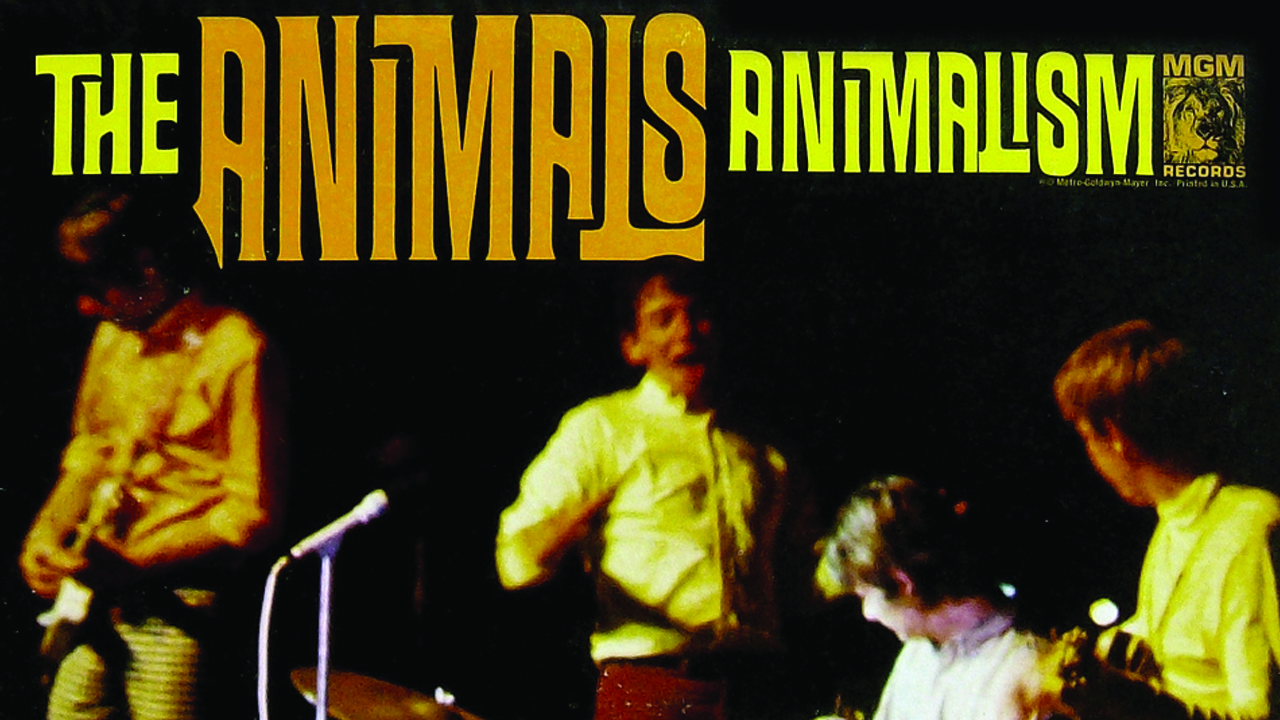
The Animals
Animalism (Decca)
Formed in Newcastle in 1963, and originally consisting of vocalist Eric Burdon, guitarist Hilton Valentine, bassist Chas Chandler, drummer John Steel and organist Alan Price, The Animals had split with producer Mickie Most and EMI’s Columbia Records by the end of 1965 after seven hit singles and two hit albums, with Price having already been replaced by Dave Rowberry from The Mike Cotton Sound earlier in the year. The Animals started 1966 with a new record label, Decca, and a new American producer Tom Wilson, famed for his work with Bob Dylan, but their third UK album Animalism was to a great extent business as usual, offering a similar mix of R&B cover versions of songs by Chuck Berry, John Lee Hooker etc to their Columbia albums, and it reached No.4 in the UK chart. Wilson, however, gives the band a grittier sound than Most that enhances
their bluesy style. Outcast is the strongest track and one of The Animals’ best, driven by Rowberry’s piano and Valentine’s fuzz guitar riff, with a superb wounded vocal from Burdon, and Valentine utilises his fuzz pedal again on That’s All I Am To You. Burdon customises the lyric to Joe Tex’s One Monkey Don’t Stop No Show to reference the Flying Scotsman from Newcastle to London and introduces Hooker’s Maudie with a spoken explanation, while he is at his bluesy best on Bessie Smith’s Gin House Blues and Screaming Jay Hawkins’ I Put A Spell On You.
Though Steel plays on most or all of the album, he had left by the time of its release in June, replaced by Barry Jenkins from The Nashville Teens who is pictured on the cover.
Recorded after the album with Jenkins but released before it, The Animals’ second single for Decca, Don’t Bring Me Down, written by Brill Building songwriters Gerry Goffin and Carole King, is Burdon’s favourite that The Animals recorded, but he soon felt it was time for a change. “I woke up one morning and realised that I was not with the Geordie band that had left Newcastle. We had lost our identity,” he said. The Animals would be over by the end of the year.
Jon Harrington
—
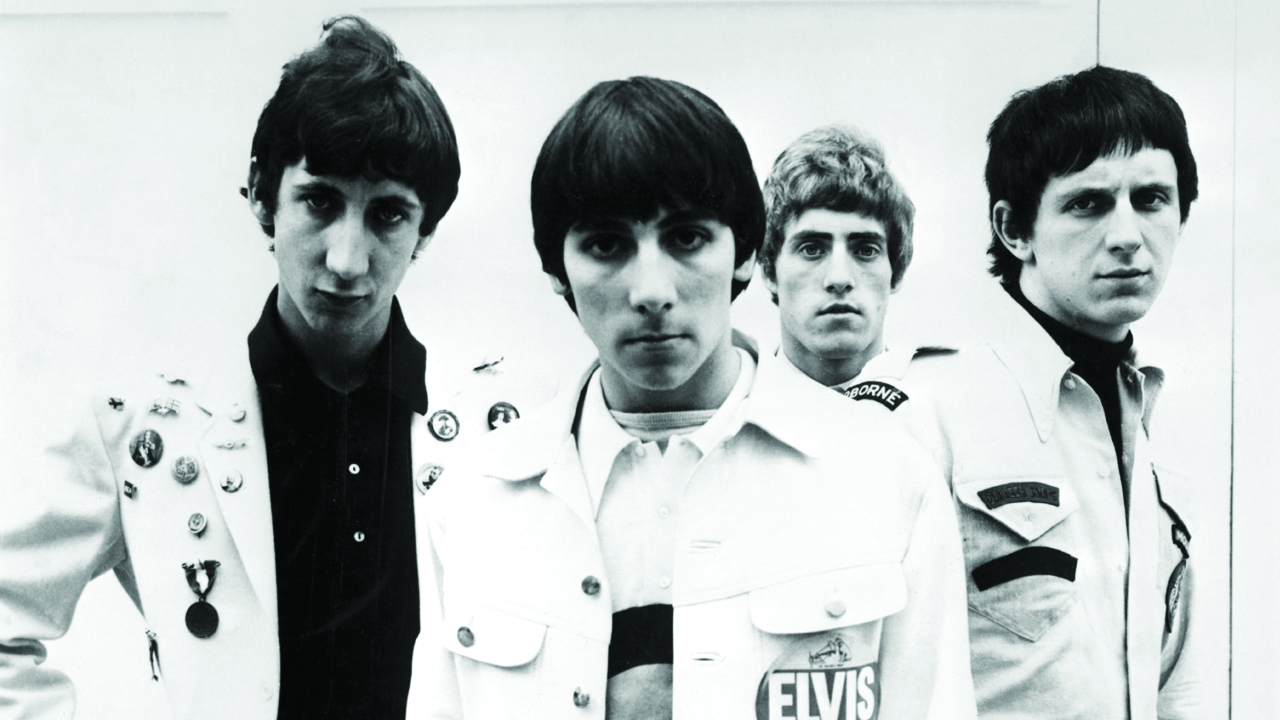
Experiments In Sound
By 1966, The Who were stretching their wings and trying out a rock opera approach for size…
The Who’s second album, A Quick One, is 1966 personified. Talking about the album years later, The Who’s former co-manager, Chris Stamp, said he could hear “Carnaby Street, The Ad Lib club, the fashion boutique Biba and [his actor brother Terence’s girlfriend] the fashion model Jean Shrimpton” in the music.
A Quick One was recorded in bursts throughout autumn and winter ’66, mostly at London’s IBC Studios. Its centrepiece was Pete Townshend’s first attempt at a rock opera, A Quick One While He’s Away. But Townshend also contributed three shorter songs: Run Run Run, Don’t Walk Away and So Sad About Us. With their clipped harmonies and rumbling guitars, all three fulfilled his latest description of The Who’s music as ‘power pop’.
Chris Stamp had recently cut a deal with song publishers Essex Music, whereby Roger Daltrey, John Entwistle and Keith Moon received a £500 advance each for writing two songs apiece for the album. The money was welcome: “At the time we were on £20 a week,” said Entwistle. “Which just about paid for the booze.” But the deal was also good for band morale.
That said, their contributions varied vastly in style and quality. Roger Daltrey only managed one song, See My Way, a piece of Buddy Holly-inspired pop, on which John Entwistle puffed away on the French horn. By the time he recorded the song, Daltrey had already spent the advance he’d been paid on a canary yellow Volvo P1800, the same model actor Roger Moore drove in the TV show The Saint.
Entwistle’s debut solo compositions, Whiskey Man and Boris The Spider, also appeared on A Quick One. Entwistle demoed Whiskey Man beforehand, playing it to the two most important people in his life: his mother Queenie (once described as “the band’s shop steward”) and his girlfriend and future wife Alison Wise. Having not heard the song, Townshend took Alison aside and asked what it sounded like. “Lovely,” she told him. “Much better than your songs.”
There was something of Henry Mancini’s theme for the TV show Peter Gunn in Whiskey Man. But it paled next to Entwistle’s other composition, Boris The Spider. Entwistle came up with the title while drinking with Bill Wyman and Charlie Watts in The Scotch Of St James club. The drunker they became, the sillier the conversation, as the trio thought up names for different animals. Entwistle thought Boris – after the horror-film actor Boris Karloff – was a good name for a spider. “It was the fastest song I ever wrote,” he said. But it marked the emergence of John Entwistle as The Who’s second songwriter.
Entwistle and Townshend both helped Keith Moon with his compositions. Cobwebs And Strange was, said Townshend, “a rip-off” of Eastern Journey by the big-band drummer Tony Crombie And His Orchestra. Moon played the bass drum and cymbals; Townshend a banjo and penny whistle; Daltrey a trombone, and Entwistle the cornet and tuba. At one point, co-manager Kit Lambert ordered them to march around the studio while they played. The whole song sounded as if it might collapse at any moment.
Moon’s other contribution, I Need You, was, he said, “a musical illustration of a transport café”. Breaking through its singsong melody was The Who’s roadie Neville Chesters talking in a Liverpudlian accent, and Moon as an aged cockney doorman asking a pop star to move his car.
What The Who created with Cobwebs And Strange and I Need You was something unmistakably British. That the songs were featured on the finished album alongside Martha And The Vandellas’ Heatwave only heightened their Britishness. After spending three years immersed in American R&B and soul, The Who were finally finding inspiration closer to home.
At the time we were on about £20 a week, which just about paid for the booze. - John Entwistle
The recording sessions at IBC were usually broken up by daily drinking sessions in the neighbouring Dover Castle pub in nearby Weymouth Mews; after which Keith Moon would return to the studio and quietly wreak havoc. IBC’s Studio A contained a period fireplace with delicately sculptured cherubs, all of which suddenly and mysteriously acquired oversized, hand-drawn penises.
But when Kit Lambert announced they were 10 minutes short of material for the album, the drinking stopped, and it fell to Pete Townshend to make up the shortfall. A Quick One was completed by Townshend’s 9:14-minute mini-opera, A Quick One While He’s Away. But rather than a meticulously crafted musical suite, it was cobbled together to plug a gap. It contained six songs woven together to tell a story. In A Quick One… a young girl is abandoned by her boyfriend, encounters an old train driver, who plies her with sweets before having sex with her. The girl is later reconciled with her boyfriend, confesses to what’s she’s done and asks for forgiveness. The Who had just played a tour compered by the lugubrious music hall comic Max Wall, and A Quick One… lightened its dark and disturbing narrative with a strand of very British humour and a hint of pre-war music hall style.
A Quick One While He’s Away Three trailed some of the ideas The Who later used on Tommy, leading to Townshend describing it as “Tommy’s parents”. But what’s astonishing is how much of it was inspired by its composer’s childhood trauma. As a young boy, Townshend was sent to live with his maternal grandmother, while his parents tried to save their marriage. Townshend has since claimed he was emotionally abused by his grandmother and, possibly, sexually abused by her male friends: “But I never realised that was what I was writing about at the time.”
A Quick One was released in December 1966 and sounds like an audio time capsule of the year. Reviewing the album in Disc And Music Echo, writer Penny Valentine declared The Who “the group with the most interesting LP ideas since The Beatles”. Soon after, Pete Townshend ran into Paul McCartney in a London nightclub. “He was raving over the album,” said Townshend. “And saying it was exactly the sort of thing The Beatles were working towards.”
With its marching bands, its spoken-word in-jokes and its multi-part mini-opera, A Quick One empowered the group and, especially, Townshend to think even bigger. It was the sound of The Who’s future.
Extract from Pretend You’re In A War: The Who And The Sixties by Mark Blake, Aurum Press.
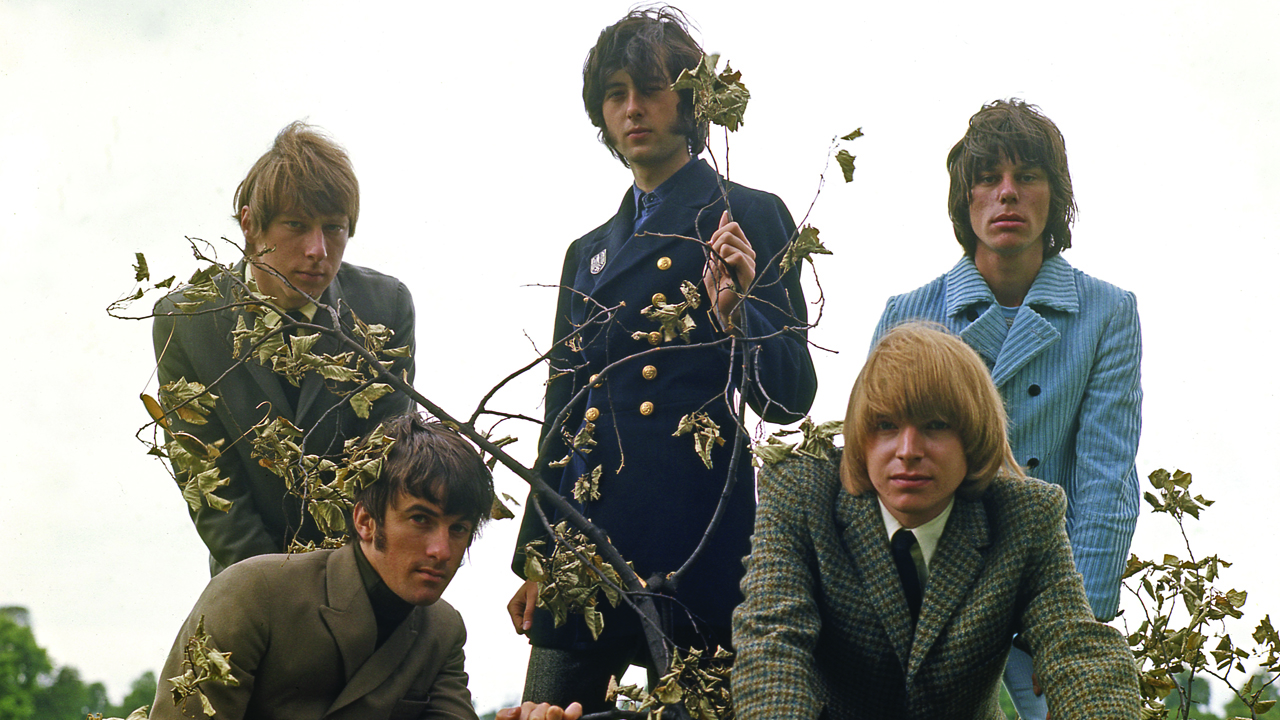
Yardbirds
Yardbirds, aka Roger The Engineer (Columbia)
Delayed by their heavy schedule that included extensive touring in the USA and Europe, the Yardbirds’ self-titled first UK studio album didn’t appear until August 1966, by which time the band included the incendiary lead guitar playing of Jeff Beck, who replaced Eric Clapton in March 1965. Vocalist Keith Relf, rhythm guitarist Chris Dreja, drummer Jim McCarty and bassist Paul Samwell-Smith, who produced the album, completed the group. Recorded at Advision Studio on Bond Street in London on a four-track tape machine, Relf told author Pete Frame that the sessions happened over just five days: “There was no mixing… Most of the tracks were done on the spot: while the guys were putting down the backing track, I was writing the lyrics in the vocal booth.”
Despite this, the album’s mix of supercharged blues, prototype psychedelia, feedback and Gregorian monk chants was groundbreaking. Paving the way for the heavy blues rock of Cream and Led Zeppelin, the blistering Lost Woman, The Nazz Are Blue and Rack My Mind reflect the way the band built their fiery work-outs from purloined blues riffs and licks (Snooky Pryor’s Someone To Love Me, Elmore James’ Dust My Broom and Slim Harpo’s Scratch My Back respectively) and showcase Beck’s amazing talent (he makes a sustained one-note solo exciting on The Nazz Are Blue). Hit single Over, Under, Sideways Down was initially inspired by Bill Haley And The Comets’ Rock Around The Clock, but Samwell-Smith’s walking bass and McCarty’s rockabilly drumming are overdubbed with a unique winding Beck guitar riff, rabble-rousing calls of ‘Hey!’ and lyrics about ‘Laughing, joking, drinking, smoking till I’ve spent my wage’ that take the song somewhere else entirely. Often added to reissues, the Yardbirds’ extraordinary next single, the psychedelic Happenings Ten Years Time Ago features the dual attacking guitars of Beck and Jimmy Page.
Jon Harrington
All Change For Yardbirds
_It was Paul Samwell-Smith out and Jimmy Page in for the Yardbirds in July 1966… _
I’m a bit too old at 23 for all those screaming kids leaping about. I don’t really think I’ll be missed in the group – no one really noticed me on stage. I might just as well have been a dummy. A robot could have done what was required of me. Keith and Jeff are really the only two faces that matter in the Yardbirds.”
The speaker is Paul Samwell-Smith, the bass player who has just left the group after three years’ hard work. Sam was spokesman for the group, and played a part in the production and composition of the majority of their hit singles.
Whatever his reasons for leaving, one thing is certain, and that is it takes a degree of moral courage to give up the money that a successful group like the Yardbirds are making, both in the US and England, now.
However, Sam’s three-year stand has not exactly left him impoverished, as was evident from the Lotus convertible we sped about London in last Monday, and his remarks about trading it in for a Rover 2000 next week.
“Naturally there are things I regret about leaving – like the money,” said Sam. “But you can’t go on doing something you don’t want to do for the rest of your life. It was just one long grind up and down the country.
“I shall miss the companionship and the humour of the group. We’d built up a kind of humour of our own. I can remember the early days when Keith and I tried so hard to keep the group together looking for work in pubs all around Harrow. There was a lot of excitement to begin with, but now it’s gone, and I’ve got to find a new baby.”
Just what kind of a “new baby” Sam is looking for seems vague, but he is obviously still very interested in the pop music world and would like to continue working on the production side – on the secret list seems to be something that he and Ray Davies are working on.
“I should like to work with the Yardbirds on a few of their numbers, but obviously this would be very difficult now I am not in the group and attuned to their ideas. I’m also very interested in film work, particularly the advertising side of things. Most of the advertising techniques today are old fashioned ideas worked out by old men. A few are good, like the Guinness adverts, but mostly they rely on sex-appeal, which is very old fashioned.”
Sam has been out of the group now for nearly 10 days. He looks happier, healthier and more relaxed than I have ever seen him.
“I’m doing things – ordinary things – which I had almost forgotten about which give me great pleasure,” said Sam.
WHY I JOINED
“I want to contribute a great deal more to the Yardbirds than just standing there looking glum. Just because you play bass does not mean you have no presence. Look at Bill Wyman in the Stones – he wears all that strange gear on stage and stands there doing nothing, but he does it better than anyone else!”
The speaker is Jimmy Page, the session musician who has taken up the Yardbirds’ bass, although he is widely recognised as one of the finest guitarists on the popular music scene in Britain.
“Chris Dreja is learning the bass at the moment,” said Jimmy, “and it seems likely that I will take over on guitar at a later date.”
Most artists seem to leave groups and go into record production for themselves, but Jimmy has worked the trick in reverse. Was he not getting more satisfaction out of his session work?
“I was drying up as a guitarist,” said Jimmy. “I played a lot of rhythm guitar, which was very dull and left me no time to practise. Most of the musicians I know think I did the right thing in joining the Yardbirds.
“I wrote a few songs to which Jackie de Shannon put words, and sure I produced records, but take a look around – who hasn’t produced a record?”
Jimmy has had previous experience with a group when he played for Neil Christian while he was still at school.
“I was only 14 then,” recalled Jimmy, “and Neil was… older! I chucked it in because of the terrible conditions and travelling rough. With the Yardbirds we travel in a Chevrolet, and the instruments follow on behind in a van. If we have a date like the one in Blackpool at the weekend, we fly – that’s not a hardship.”
Initially, the Yardbirds thought of Jimmy to replace Sam because of his long-standing friendship with guitarist Jeff Beck. “Jeff and I have known one another since school days, when he tried to sell me a guitar he had made,” said Jimmy. “I was delighted when the offer was made to join the group. The Yardbirds have begun something with their new sounds and unusual techniques which is by no means over, and I would like to contribute and help develop their ideas.”
Jimmy has worked on sessions for both The Kinks and The Who, but he became bored with doing work which the groups themselves could have performed. He is happy to be working with his friend Jeff, and genuinely enthusiastic about the future with the Yardbirds.
One thing is certain, and that is with Jeff and Jimmy in the same group, the Yardbirds have, with the exception of Eric Clapton (himself an ex-Yardbird), the two most creative guitarists around the group scene today.
One wonders, though, how Jimmy Page will feel in, say, one year’s time, when the pressures and tensions of working in a frantically busy group have really got to work.
© Keith Altham, New Musical Express, July 8, 1966.
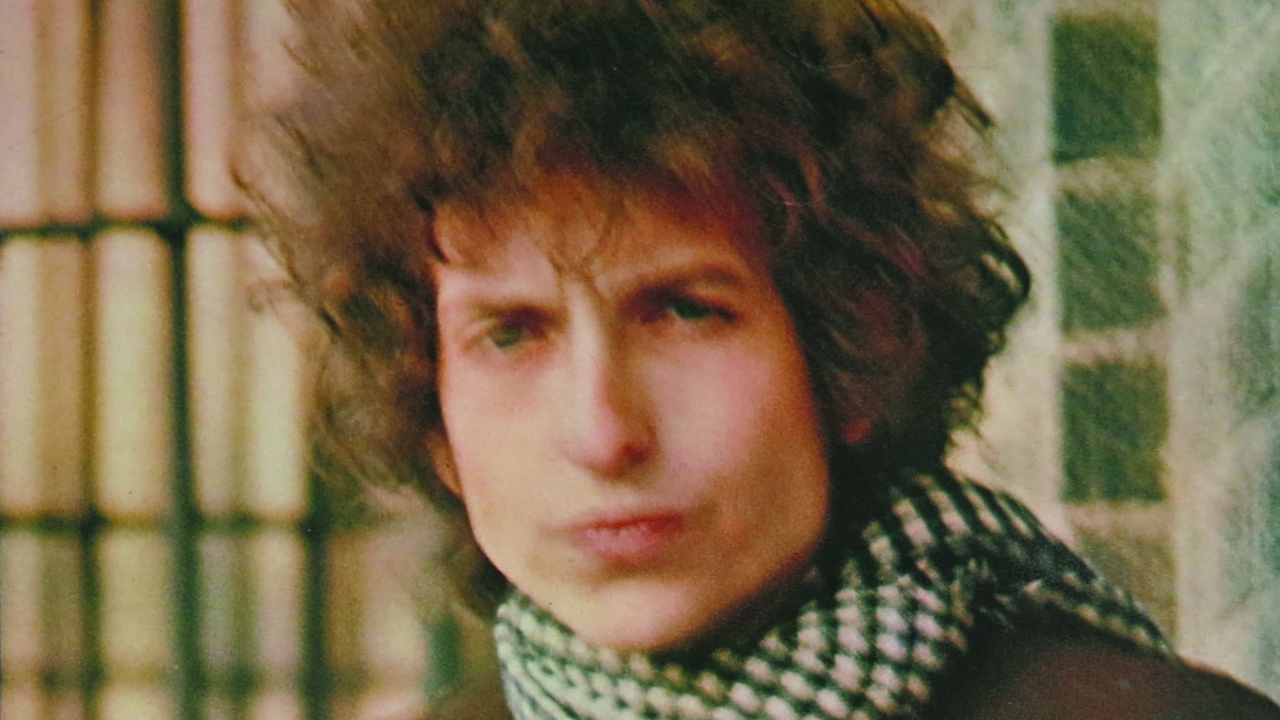
Bob Dylan
Blonde On Blonde (Columbia)
Given that he crashed his 1964 Triumph motorbike in July – cracking a vertebra and subsequently retreating from the spotlight – it seems somewhat obtuse to describe 1966 as the single greatest year of Bob Dylan’s life. Creatively speaking, though, there’s absolutely no contest. Concluding the loose trilogy that began with Bringing It All Back Home and Highway 61 Revisited, both from 1965, Blonde On Blonde had a difficult birth – 10 sessions that took place in New York City resulted in just one completed song, before a galvanising move to Nashville took him out of a creative funk – but gave the songwriter what remains, pound-for-pound, his best-loved baby.
Released in the summer of 1966, Blonde On Blonde threw listeners for a loop as Rainy Day Women #12 & 35 wheezed to life like a dissolute New Orleans funeral procession. The album’s other best-known cuts were the folksy I Want You and the delicate Just Like A Woman.
Yet elsewhere, Dylan was patently still in thrall to the blues. The lolloping Pledging My Time nodded to lyrics and motifs from Skip James, Robert Johnson and Elmore James. The biting swipe of Leopard-Skin Pill-Box Hat referenced Lightnin’ Hopkins’ Automobile Blues. Dylan even referenced Memphis Minnie’s classic Me And My Chauffeur Blues on Obviously 5 Believers: one of the most pugnacious moments across the four sides. Absolutely Sweet Marie and Most Likely You Go Your Way And I’ll Go Mine shuffled and stomped (respectively) their way out of the speakers, while Temporary Like Achilles took its sweet old time, riding on cathouse piano and a lazy harp.
For all Dylan’s talk of changin’ times, Blonde On Blonde played out more like a salute to the old guard than an iconoclast making it his mission to tear them down. His genius, perhaps, was to spice those familiar blues structures with razor-sharp, fiercely literate wordplay, raising the bar to a place that few other songwriters of 1966 could possible hope to reach.
Henry Yates
—
